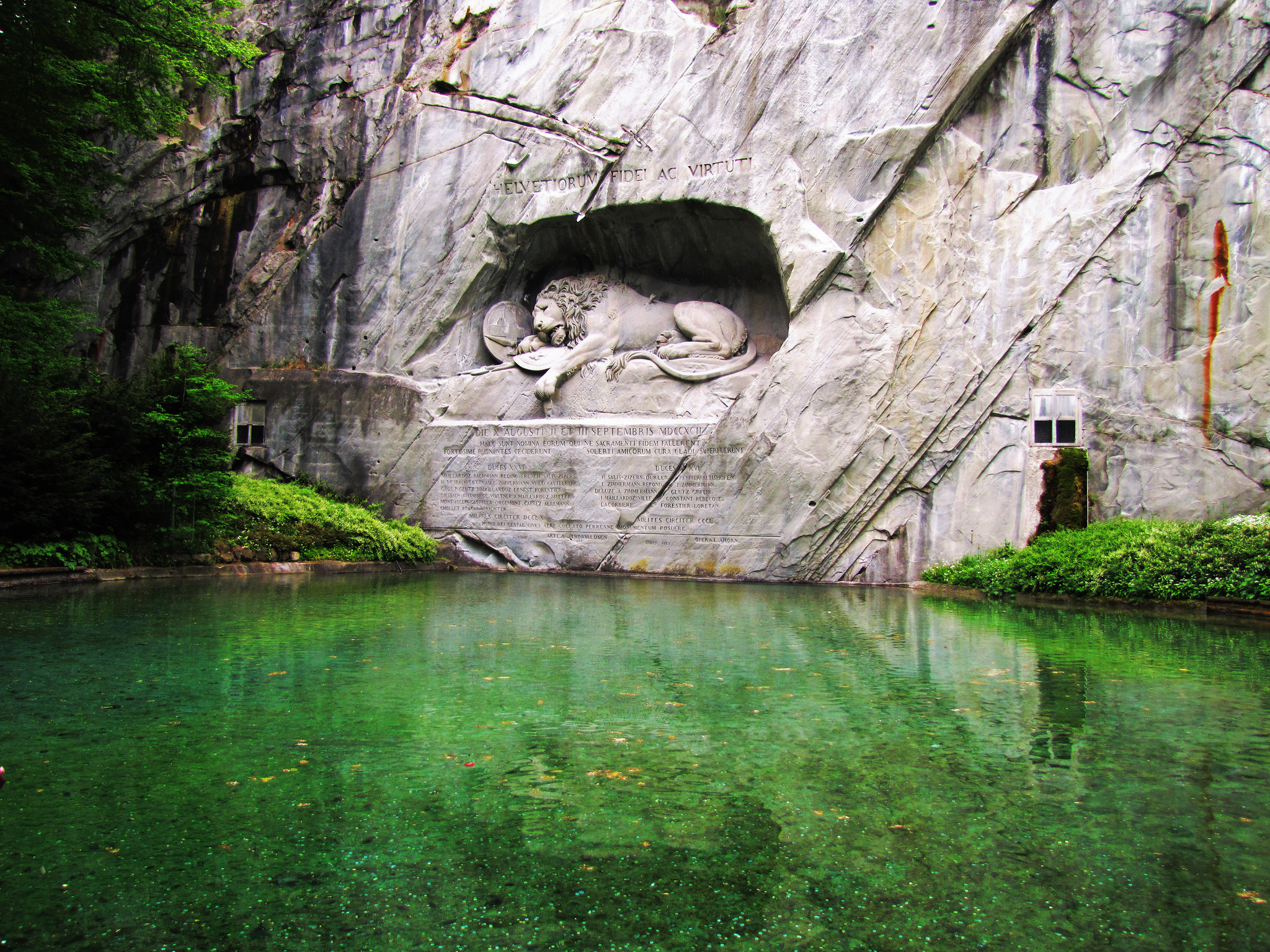Nestled in the heart of Lucerne, Switzerland, lies a powerful and emotive sculpture that has captivated visitors for nearly two centuries. The Lion Monument, also known as the “Lion of Lucerne,” is a striking tribute to the Swiss Guards who lost their lives during the French Revolution. This remarkable work of art, carved into the face of a sandstone cliff, has become an iconic symbol of the city and a poignant reminder of loyalty and sacrifice.
The monument depicts a dying lion, impaled by a spear, with its paw resting protectively over a shield bearing the fleur-de-lis of the French monarchy. The lion’s face, etched with pain and sorrow, seems to gaze into the distance with a haunting expression that touches the hearts of all who see it. Measuring a impressive 10 meters in length and 6 meters in height, the sculpture’s sheer size adds to its impact, making it impossible to ignore.
Created between 1820 and 1821 by Danish sculptor Bertel Thorvaldsen, the monument was commissioned to commemorate the massacre of Swiss Guards during the storming of the Tuileries Palace in Paris on August 10, 1792. These brave soldiers, sworn to protect the French royal family, stood their ground against overwhelming odds, with many sacrificing their lives in the line of duty. The inscription above the sculpture, “Helvetiorum Fidei ac Virtuti” (To the loyalty and bravery of the Swiss), serves as a lasting tribute to their courage and dedication.
The story behind the Lion Monument is as fascinating as the sculpture itself. It was the brainchild of Karl Pfyffer von Altishofen, a Swiss Guard officer who had been on leave in Lucerne during the fateful attack. Determined to honor his fallen comrades, Pfyffer spearheaded the project, raising funds and enlisting the talents of Thorvaldsen to bring his vision to life. The result is a masterpiece that has stood the test of time, continuing to move visitors from around the world.
Over the years, the Lion Monument has become much more than just a memorial. It has evolved into a symbol of Lucerne itself, appearing on countless postcards, guidebooks, and souvenirs. The small park surrounding the sculpture, with its tranquil pond reflecting the lion’s image, provides a peaceful oasis in the bustling city. Visitors often find themselves lingering here, contemplating the monument’s significance and absorbing its powerful message.
Despite its enduring popularity, the Lion Monument faces ongoing challenges. The soft sandstone from which it was carved is susceptible to erosion, requiring regular maintenance and conservation efforts to preserve its intricate details. Local authorities and conservation experts work tirelessly to protect this beloved landmark for future generations to appreciate and admire.
The Lion Monument’s impact extends far beyond its physical presence. It has inspired countless artists, writers, and thinkers over the years. Perhaps most famously, Mark Twain described it in his book “A Tramp Abroad” as “the most mournful and moving piece of stone in the world.” This sentiment continues to resonate with visitors today, who often find themselves deeply moved by the sculpture’s raw emotion and historical significance.
As Lucerne continues to evolve and grow, the Lion Monument remains a constant reminder of the city’s rich history and the universal themes of loyalty, sacrifice, and remembrance. Whether you’re a history buff, an art enthusiast, or simply a curious traveler, a visit to this extraordinary sculpture is sure to leave a lasting impression. The Lion of Lucerne stands not only as a tribute to the fallen Swiss Guards but also as a testament to the enduring power of art to touch our hearts and connect us to the past.
The Lion Monument in Lucerne, Switzerland, stands as a poignant tribute to the Swiss Guards who perished during the French Revolution. Carved into a sandstone cliff face, the dying lion sculpture symbolizes loyalty, bravery, and sacrifice. Created by Bertel Thorvaldsen and completed in 1821, the monument continues to captivate visitors with its emotional impact and artistic merit. Its enduring presence serves as a reminder of Switzerland’s historical ties to European conflicts and the valor of its soldiers, while also functioning as a significant cultural landmark and tourist attraction in Lucerne.

